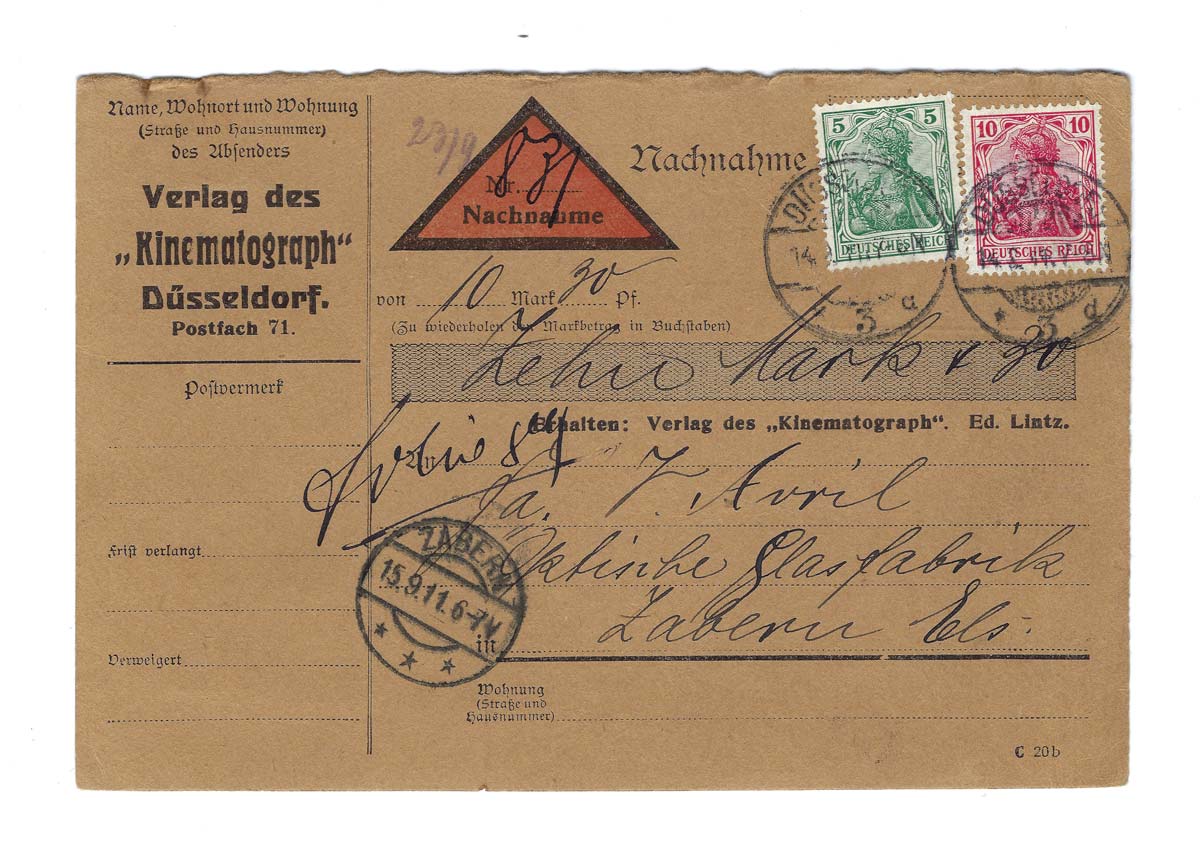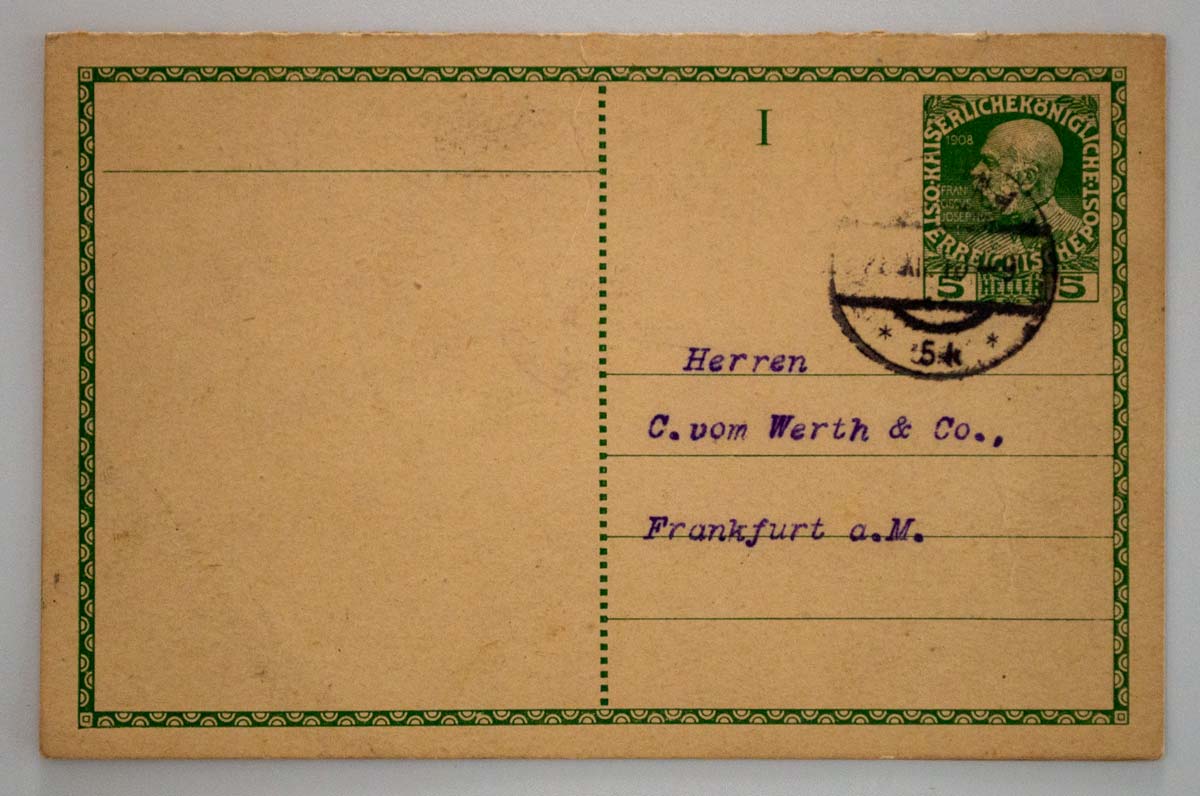
Front of the postcard from September 14, 1911, by Der Kinematograph to Optische Glasfabrik Avril.
(more…)
Front of the postcard from September 14, 1911, by Der Kinematograph to Optische Glasfabrik Avril.
(more…)Sometime between the end of 1910 and the first days of January 1911, a postcard arrived in Frankfurt am Main. It was addressed to E. vom Werth & Co and was sent by the staff of Kinematographische Rundschau.


The above image shows a film can that was produced for the Berlin-based branch of the French company Eclipse. The lid of the can features the company‘s name circling around the center, which was intended for a label. The name is embossed and reads: „Eclipse“ Kinematographen und Films-Fabrik. Urban Trading Company, Berlin.. This resembles the spelling usually used by Eclipse in advertisements published from 1907 to the end of 1912.1 Urban Trading Co. was later dropped by the German branch of Eclipse, indicating that the can was produced prior to 1913.
(more…)
The above image shows a film can that was produced for the Paris based branch of the Vitagraph Company. It was used as packaging for The Poor Musician, a dramatic film that was scheduled for release in the USA on February 23, 1909.1 The subsequent release of the film in France was roughly three months later. It was listed as novelty under the title Pauvre Musicien! in Cine-Journal at the end of April 1909.2
(more…)
With the post Briefkasten. Kino. we got an overview of available trade journals for the German-Speaking audience in 1910. One of the listed journals is Internationale Film- und Kinematographen-Industrie. Illustrierte Fachzeitschrift für alle Gebiete der Projektionskunst und deren Schaustellungen. Since information regarding this trade journal is scarce I‘d like to use this post to showcase some physical remnants of this publication.
(more…)
With the first issue of May 1913 the Erste Internationale Film Zeitung1 published a tribute to Ole Olsen who would turn 50 years old on May 5, 1913. It was mend to celebrate a well known and successful businessman who contributed his fair share to the success of the film industry in general and in Germany in particular. In that sense – Tillykke med fødselsdagen (Happy birthday).
(more…)